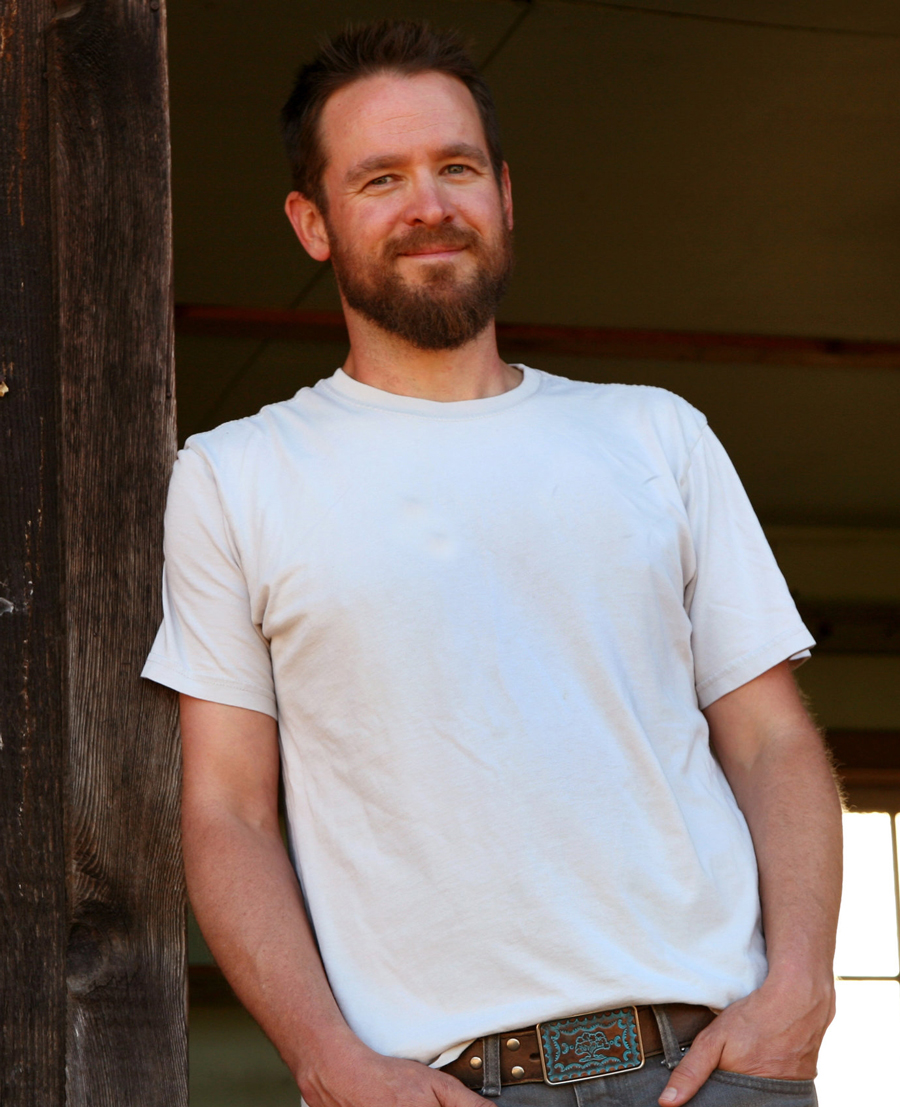The CLA websites are currently under construction and may not reflect the most current information until the Fall Term.
The author and naturalist on how he got started, his writing process, and new novel

John Larison
By Emily Willis, CLA Student Writer - January 25, 2024
John Larison has been working as a writing instructor in the School of Writing, Literature, and Film since 2007. Since then, he’s brought his passions of the outdoors into the classroom to propel his joy of teaching, including classes such as Environmental Writing, Creative Writing and Publishing, and Classical Mythology. Born in Philomath, but raised on the road by two National Geographic filmmakers, Larison includes much of his knowledge of the outside world into his writing and is able to capture readers with his vivid imagery and intriguing plots.
“For me, it all started with fishing,” said Larison. “As a child, I was really interested in fishing, specifically fly-fishing. I was in the library, and they had all these fishing books on the shelves. I happened to find a book called A River Runs Through It by Norman Maclean. It was a work of literature, but also about fishing, not only in how to fish, but sort of the why of fishing.”
Larison goes on to explain how A River Runs Through It led him to similar books and eventually inspired him to major in English and philosophy. After graduating from OSU with an MFA in 2007, Larison’s first book was a how-to text on fly-fishing, The Complete Steelheader (2008). He went on to publish two fishing-related novels, Northwest of Normal (2009) and Holding Lies (2011).
“During my first teaching job in Eugene, the Afghanistan and Iraq wars began. I was really disturbed by how the Western myth was being used by politicians at that time. In particular, one political leader liked to wear a Stetson when he talked of using extreme violence to ‘right’ an injustice. His calculated, theatrical cowboy swagger seemed to resonate with my students and their parents. I had to figure out why.”
Larison began to research the Western genre, its tropes and historical fallacies, and how it became a dominant American narrative, even among those who have never watched or read a Western themselves. He found himself thinking a lot about the dangers of the Western’s version of masculinity.
“If the Western novel helped create this problem, maybe a different kind of Western could help to solve it.”
This train of thought led Larison to write his first blockbuster, Whiskey When We’re Dry. Set in 1885, a seventeen-year-old Jessilyn Harney finds herself orphaned and alone on her family's homestead. Desperate to fend off starvation and predatory neighbors, she cuts off her hair, binds her chest, saddles her beloved mare, and sets off across the mountains to find her outlaw brother Noah and bring him home. Told from Jess's point-of-view, Whiskey When We're Dry is a sprawling epic and a reckoning with the Western myths that are entwined with history.
Larison describes his biggest literary challenge as the one he’s finishing right now. “My new book, called The Ancients, is a deep-time adventure story that seeks to change the way we think about climate change.”
Larison explains how his research journey started from a broad viewpoint, figuring out how to see the story of climate change in a more holistic way. Thirty drafts over the course of several years led him to a novel steeped in research from the fields of archeology, climate science, and more.
“I was trying to think about how to frame the problem of climate change more accurately,” says Larison. “How do I tell a story that brings the modern reader into that framing? It was a huge challenge that took me years to wrap my head around.”
Just on a process-level The Ancients proved challenging: how to distill so much research on human and climate history into a narrative that readers would find enchanting, captivating, and moving.
“My writing process is like having a very dim flashlight and I’m in a giant warehouse with the lights off,” explains Larison. “I have to learn, understand, and interpret the whole warehouse, just from that dim flashlight beam.
“When I start a novel,” Larison continues. “I don’t know where it is, where it’s going. With Whiskey When We’re Dry, what I had first was the voice, this person talking to me, but I didn’t know what their story was. With The Ancients, what I had first was the idea of: ‘What if the future looked a whole lot more like the ancient past?’ But in both cases, I wrote with baby steps.”
Despite working on this fifth book, Larison looks to make a difference in the lives of the students he teaches. He tries to help them understand how art is influenced by culture and society and, in turn, influences culture and society.
“I love working with students,” says Larison. “My passion is to help young writers put their best ideas on paper in an organized and coherent way. I’m always inspired by the energy they bring to the classroom, undergraduate or MFA students. Every term, they teach me more about this artform I love.”
Photo by Nathan Koenigscknecht